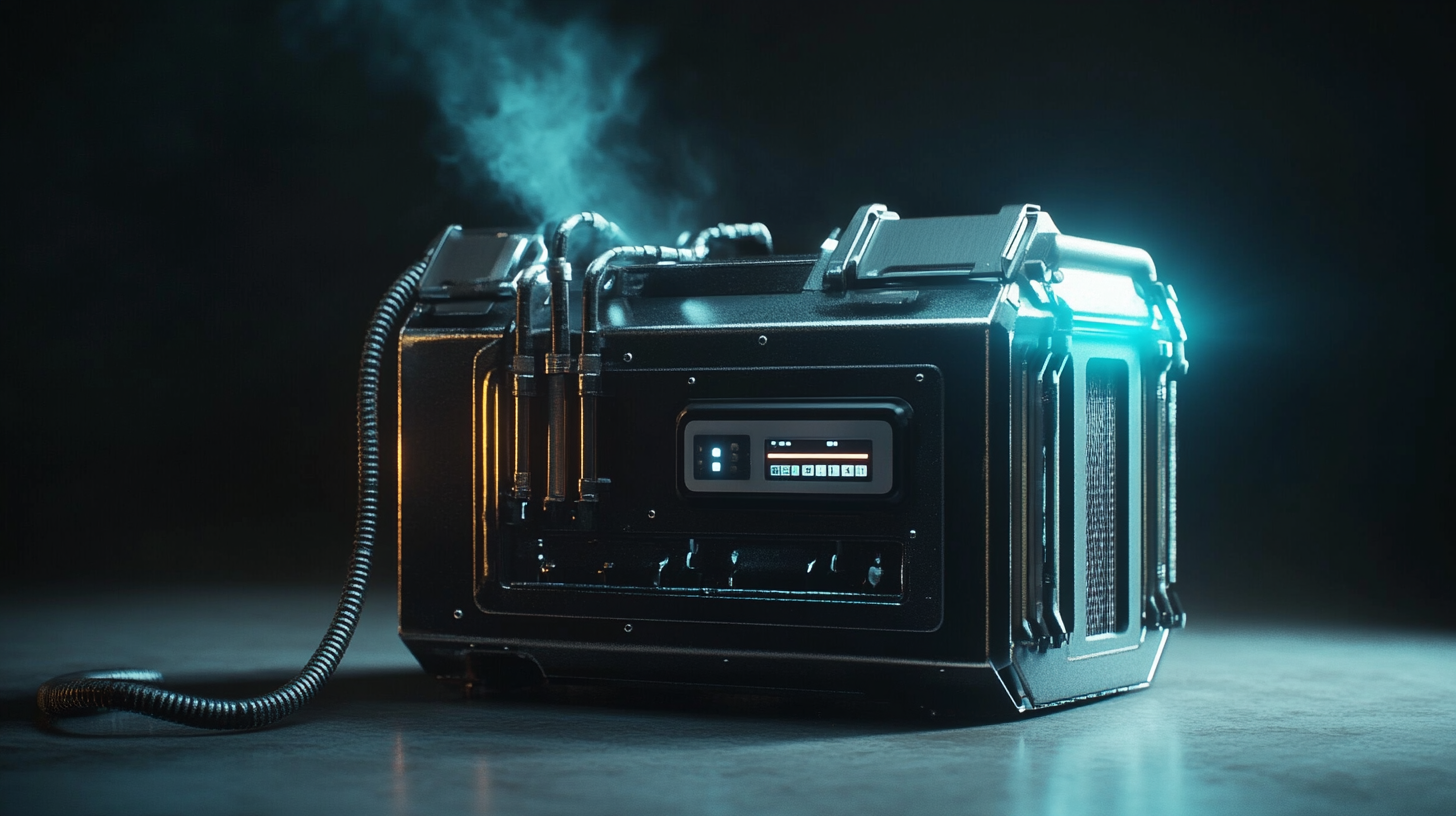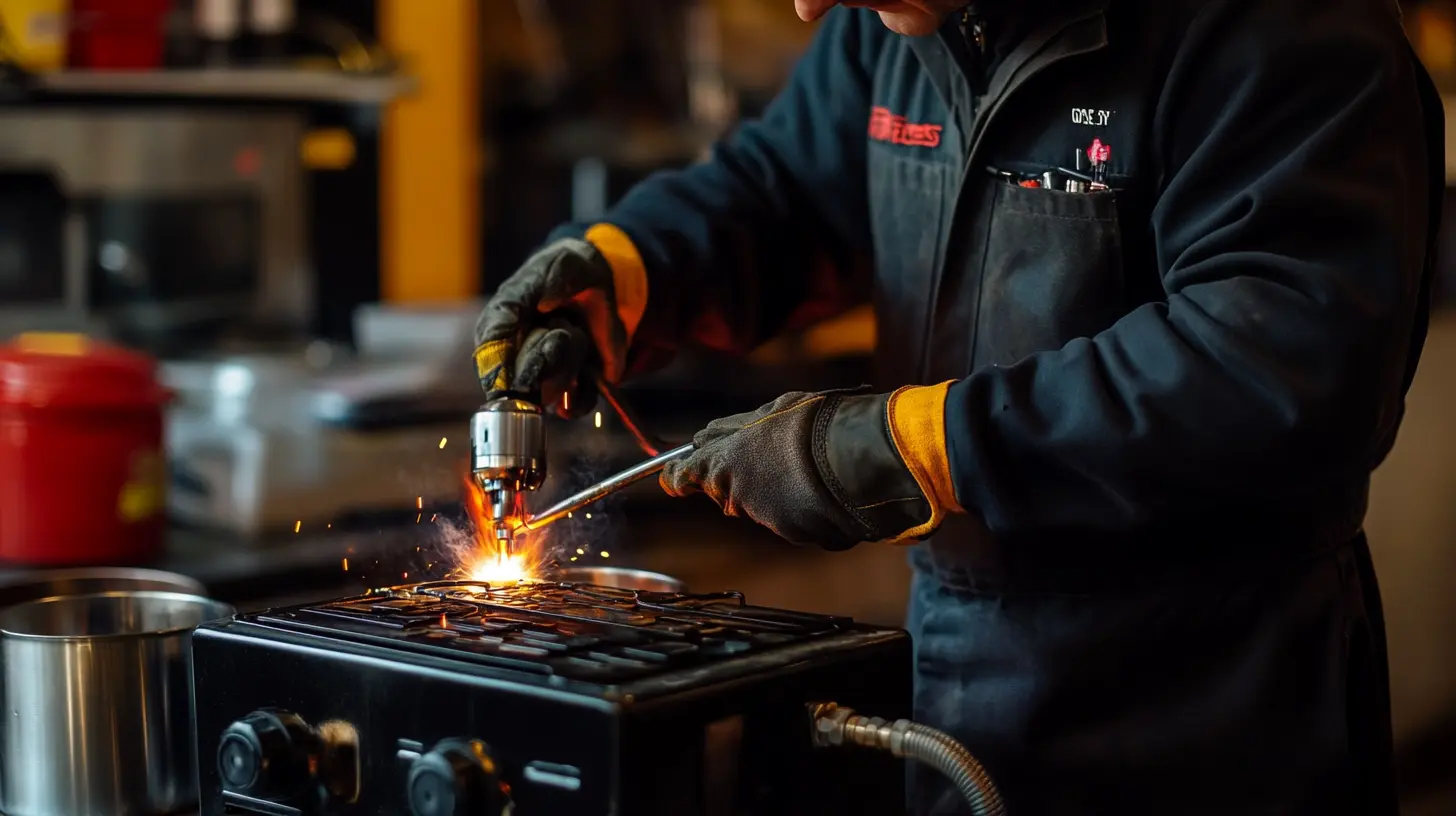In the world of welding, Gas Mig Welders have been a traditional tool for the professionals to seek out productivity and quality for their projects. But as technology marches ahead and the demand for more versatile and affordable alternatives rises, it is time to adopt other means that can reach an almost similar result without the limitations of gas systems. This blog will hence focus on the best alternatives to Gas Mig Welders, along with insight into their pros, efficiency, and suitability for different applications.
At TAIZHOU YIKE MACHINERY CO., LTD, we are committed to producing quality inverter welding machines with exceptional performance and value! Based in Xiayangzhang, Daxi Town, Wenling City, Zhejiang, China, we are well situated in terms of transportation in order to meet the needs of our clients. By promoting innovative alternatives to conventional Gas Mig Welders, we would like to see the welding community come to greater levels of productivity without deviating from the high standards which we uphold in the welding industry.

Gas Metal Arc Welding (GMAW), otherwise known as gas MIG welding, has, for quite a while now, played a major role in fabrication and construction, given its versatility and ease of use. However, as welding technologies advance and the demands of modern welding projects shift, the limitations of gas MIG seem to be coming more into the limelight. A major limiting issue is its dependence on a shielding gas, one that can be affected by wind, drafts, and other environmental factors detrimental to weld quality. This instability, in certain cases, has been known to cause inconsistent weld quality, especially during outdoor operations. Additionally, gas MIG apparatuses periodically require maintenance and refilling with gas, which can be troublesome and costly. Transporting bulky gas tanks can be impractical for operations requiring speedy movement, flexibility, or work in tight spaces. In addition, gas MIG welding may produce shallow penetration compared to other welding types, such as flux-cored or TIG welding, causing weaker joints in high-stress applications. With an increasingly competitive and demanding market driving industrialists towards more efficient and versatile welding solutions, alternative techniques such as FCAW and inverter-based welding machines are gaining in popularity. Not only do they reduce the need for shielding gas, but they are also better at functioning in a wider range of situations. As welding professionals and companies strive to stay abreast in a rapidly changing world, recognizing these limitations and seeking alternatives to suit the growth of demands relating to modern welding projects becomes paramount.

Nevertheless, this fundamentally changes the old gas MIG-based welding processes into intensive plasma arc welding, especially in industries requiring high precision and versatility. Such intense heat from the plasma torch creates a strong arc that melts a number of metals with an extraordinary degree of deviation from traditional molten-metal welding methods. Technological advancement has further enhanced plasma arc welding for thick materials to processes where the methods can be finely adjusted for delicate activity needing careful control.
New advances in techniques-related welding methods, introduced as methods by experts in the field, seem to usher an era where welding is done more resourcefully and precisely. For example, secondary welding arc method processes use gas-shielded methods of welding in achieving precision in terms of results within microns in terms of accuracy, quite equal to half of a human hair in its diameter. This indicates that the welding industry has entered toward reducing and improving quality under this method.
Also, the evolution of welding includes an aspect of metal arc 3D printing which acts as alternative casting methods. It is innovative as far as incorporating useful and complex features for new designs and reduced costs of metals into certain metallic components. With increasing industrial needs for rapidly produced and efficient components, the plasma arc welding and newer technologies surely serve as avenues for advancement in the whole manufacturing area. Such innovations gallantly pave the way into a new revolutionary era of welding where both precision and efficiency have to go hand in hand.

TIG welding, or Tungsten Inert Gas welding, is one of the best ways to achieve higher precision in welding tasks. TIG contrasts with MIG in allowing control over the weld pool, thus allowing the welder to control heat and filler material input. Such advantages come in particularly handy when doing delicate work, such as thin and detailed fabrication, when burn-through or distortion is a major concern.
One of the key benefits of TIG welding is its versatility. TIG welding may be used on stainless steel, aluminum, and asymmetric alloys readily; therefore, it is very well suited for aircraft and automobile industries. A clean and high-quality weld made with TIG welding means that the projects can afford to meet the highest aesthetic and structural standards. Because comparatively fewer impurities enter into the weld than with a gas MIG welding process, TIG welding is clearly the way to go for assignments demanding utmost regard for finish.
There is low environmental impact and generation of waste associated with TIG welding, continuing its claim for sustainability. Lesser chances of oxidation due to inert gas shielding result in better weld quality with less post-weld treatments. Thus, time saving and materials cost reduction makes TIG welding sustainable in modern fabrication and repair functions. Change in industries ensures that precision and quality maintain the relevance of the TIG welding process.

Stick welding, or Shielded Metal Arc Welding (SMAW) as it is more formally labeled, can always serve as a preferred alternative to gas MIG welding in heavier applications. This method employs the process of melting a consumable electrode with a coating of flux. The flux serves two functions, i.e. in the initial phase, it aids in the welding process, whereas, upon burning, the gases shield the weld pool from oxidation. Due to its very simple and effective way of welding, it finds an excellent use in industries where very strong welding needs to be done.
Recent innovations are enhancing stick welding systems' capabilities and efficiencies in conjunction with the development of welding technologies. One of these improvements involves upgrading welding power sources. In this regard, new models of welding power sources are able to optimize several welding processes such as, stick welding. These systems, being the most modern, can increase efficiency considerably while simplifying the welding process. In other words, they help an operator achieve repeatable results far more easily, even in the tough environment of heavy-duty stick welding. Thus, they ensure that stick welding is one of the options available to meet the need for dependable and effective welding solutions.
Further, the importance of welders is not questionable, for the skill they possess influences the quality of the final product. There are also leaders in the field of welding engineering who have made significant contributions to the advancements in the industry. Their activities stress the continuous need for innovations and education so that stick welding can be a mainstay in heavy-duty applications while shifting toward the requirements of the modern manufacturing environment.
Choosing an optimal welding method is crucial. Two very applied welding methods are gas metal arc welding (GMAW), commonly referred to as MIG welding, and flux-cored arc-welding (FCAW). Each method presents its own advantages and disadvantages catering to different welding needs.
Flux-cored arc welding scores in terms of efficiency and versatility, especially in outdoor situations where wind can hinder the shielding gas used in MIG welding. Industry reports state that in certain applications FCAW can increase productivity by as much as 50% because of its faster travel speeds and one-pass welding of thicker materials. However, FCAW generally creates more smoke and spatter than MIG welding, which might complicate cleanup and produce less aesthetically pleasing weld beads.
Conversely, MIG welding is clean, allowing for ease of application and is thus preferred by beginners and for applications requiring a clean look. The American Welding Society says that GMAW produces less waste and has a higher deposition rate than traditional welding techniques, resulting in more efficient use in production environments. However, MIG is more sensitive to environmental conditions and usually requires thicker materials for
For these reasons, the relative merits of the two welding processes are considered and the final choice between FCAW and MIG welding is dependent substantially on the job-specific aspects of the job- features such as the working environment, thickness of materials, and desired quality of finishing. The welders have to make these decisions as the industry changes, and being clearer about each process's pros and cons helps improve welding productivity.
Whereas an emerging application of traditional MIG gas welding is submerged arc welding (SAW), this is especially proved true in plants. In fact, this welding involves granulated flux deposited over the weld pool. It allows penetration and a robust weld. The welding process overhead would minimize contamination, ensuring a smooth finish, which allows for such welding to be used by industries that generally require weld joints of high quality on thick sections.
Impact with which SAW imparts itself is on its ability to produce an even output with high deposition rates hence increased productivity. In other words, operators can attain incredible speeds without losing strength and integrity. So, it is SAW, which convinces everyone that this method proves to be applicable and much better than gas MIG welding as it is less affected by winds and drafts for an increased improvement in outdoor performance or open environments. This characteristic makes it very successful in heavy projects where time and speed of execution counts.
Another important factor to consider is that submerged arc welding is most easily automated.. A good number of advanced modern plants are fitted with robots to facilitate simple welding, thus precision and repetitiveness beyond any manual capability are possible. This automatically leads to reduced costs for manual labor and minimizes the human error factor, thus boosting SAW's competitiveness as the favorite option for manufacturers aiming at making welding perfect at fine costs of investment and the best quality safety.
With the industry but slowly evolving, automation in welding is gaining traction. Robotic welding systems have become the bionic alternative to gas MIG welding, gaining higher accuracy and efficiency. The MarketsandMarkets report states that the global robotic welding system market is expected to reach USD 7.6 billion by 2027 just because of the demand for high-quality welding and increased adoption of automation in manufacturing processes.
The most significant advantages of the robotic welding process are reduced production lead time and elevated human error. Robotic systems can work non-stop, producing welds very consistently and repeatably at faster rates than labor-intensive methods manual gas MIG welding. With advances in AI and machine learning technology, robotic systems also support better real-time decisions and can dynamically adjust welding parameters based on the production environment.
In the construction sector, similar transformations were made possible by 3D printing technologies, such as those developed by RIC Technology. Companies implementing these intelligent construction solutions reap tremendous labor and time savings. As the industry advances into these realms, the intersection of robotic welding systems and advanced construction systems should usher in a greater degree of efficiency and sustainability concerning welding and fabrication processes.
The welding industry is going through a major metamorphosis as eco-awareness is taking over. An electric welder, specifically one that runs on newer technology, stands out as a good option against the traditional gas MIG welder. Compared to gas-powered machines, an electric welder emitsvery little harmful pollutants, thus providing a cleaner working environment for the user and reducing environmental hazards on account of pollution. This paradigm shift also provides conducive enabling factors for sustainability since industries are always looking for ways to lower the carbon footprint.
Another striking advantage of electric welding is its efficiency and other user-friendly attributes. These machines equipped with inverter technology ensure that heat and power are delivered consistently for cleaner welding and productivity. In addition, many electric models tend to be lightweight and portable, making it easy for welders to move equipment from one job site to another, reducing setup time. As industries adapt to the demand for sustainability, electric welding solutions are not a passing fad but a profound evolution in the approach to welding.
In addition, advancements in battery technology have unlocked cordless electric welders, offering even greater flexibility to fabricators and hobbyists. By removing dependency on gas and the complications of setup, these enable seamless welding that doesn't compromise performance. As the welding community embraces electric alternatives more and more, it is clear that these green solutions are no longer an option; they are set to become the next era of welding.
The primary limitations include reliance on shielding gas, which can be affected by environmental factors like wind, the need for regular maintenance and refilling of gas cylinders, and potentially producing less penetration compared to other welding methods such as flux-cored or TIG welding.
The presence of wind and drafts can cause instability in the shielding gas, leading to inconsistent weld quality, particularly in outdoor environments.
Regular maintenance and the necessity of refilling gas cylinders can be cumbersome and expensive, making gas MIG welders impractical for operations requiring mobility or in confined spaces.
Gas MIG welding often provides less penetration than methods like flux-cored or TIG welding, which can result in weaker joints in high-stress applications.
Alternative methods such as flux-cored arc welding (FCAW) and inverter-based welding machines are becoming more popular because they eliminate the need for shielding gas and improve performance in various conditions.
Plasma arc welding provides precision and versatility, with the capability to melt various metals accurately and to be finely tuned for delicate projects.
Innovations include the "secondary welding arc method" and the use of gas-shielded processes that enhance precision, achieving results within microns of accuracy.
Arc metal 3D printing offers a unique approach to metal fabrication, allowing for intricate designs and reduced material costs, thus representing an evolution in welding practices.
The trend towards more efficient and precise welding solutions, such as plasma arc welding and advanced welding techniques, reflects the industry's move to reduce waste and improve overall quality.
These advancements are paving the way for faster and more efficient production of components, aligning with the broader trend of innovation within the manufacturing industry.

